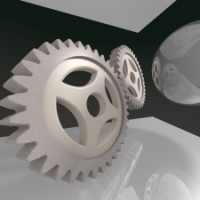Usability's Growing Role in the Development Lifecycle

With its soaring market share in the mobile, music, and tablet businesses, Apple continues to be a dominant player in the consumer hardware and software business. One key point that has helped Apple maintain this position is its focus on user-centric design. Apple highly values end-user experience, as evidenced by Steve Jobs' vision of starting with a user-centric experience and then working backward by aligning technology with a usable design.
Usability has always been part of a product development lifecycle but it's often an afterthought categorized as a time-permitting exercise. Apple has changed the landscape and made the IT world rethink its usability strategy in product design.
Years back, a study was conducted comparing the websites of Apple and Microsoft. While Microsoft’s scale of operations and product lines is larger in scope and deals with a lot of B2B and B2C domains, Apple has its own complexity in its scale of operations, too. In this study, Apple was declared the “winner,” and the company has continued to emphasize usability.
This has certainly given Apple a niche in the marketplace. Feedback on the most recent iOS release (iOS 7 in combination with iPhone 5C) also largely talks about Apple’s continuing focus on usability.
All of this is exciting news for the end-user community and big news for software testers, too. Usability opens the doors to a wider range of testers, including crowd testers who are real users helping to find additional bugs. In this process, users often end up providing feedback on other attributes, such as functionality and performance. Testers who take advantage of usability studies are able to think along the lines of the end user, making test efforts more representative and real.
Lately, connecting with such end users has become all the more feasible thanks to the growth in cloud and social networking technologies. Only a decade ago, usability studies and tests had to happen in an in-house lab where the tester was invited and guided through a series of tests to understand the feedback. This process has been greatly eased with these newer technologies, making anywhere-anytime usability testing possible.
With the industry’s growing recognition of the need for usability testing—and end users who are excited to openly share their feedback—there will be no stopping this wave of highly usable and enjoyable products from flooding not just Apple’s marketplace, but those of other players, as well.

